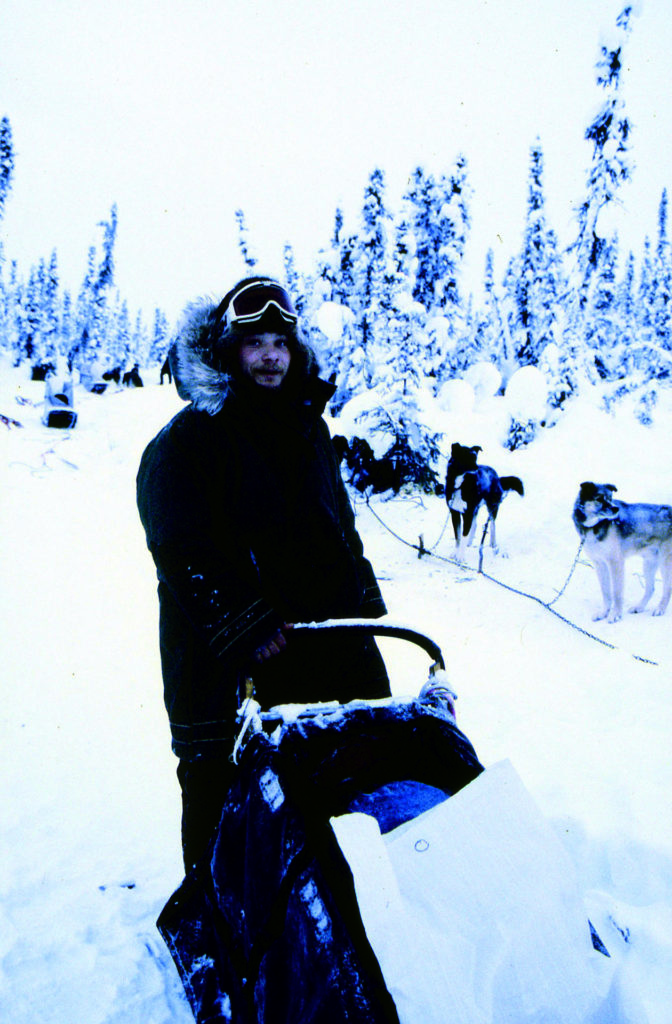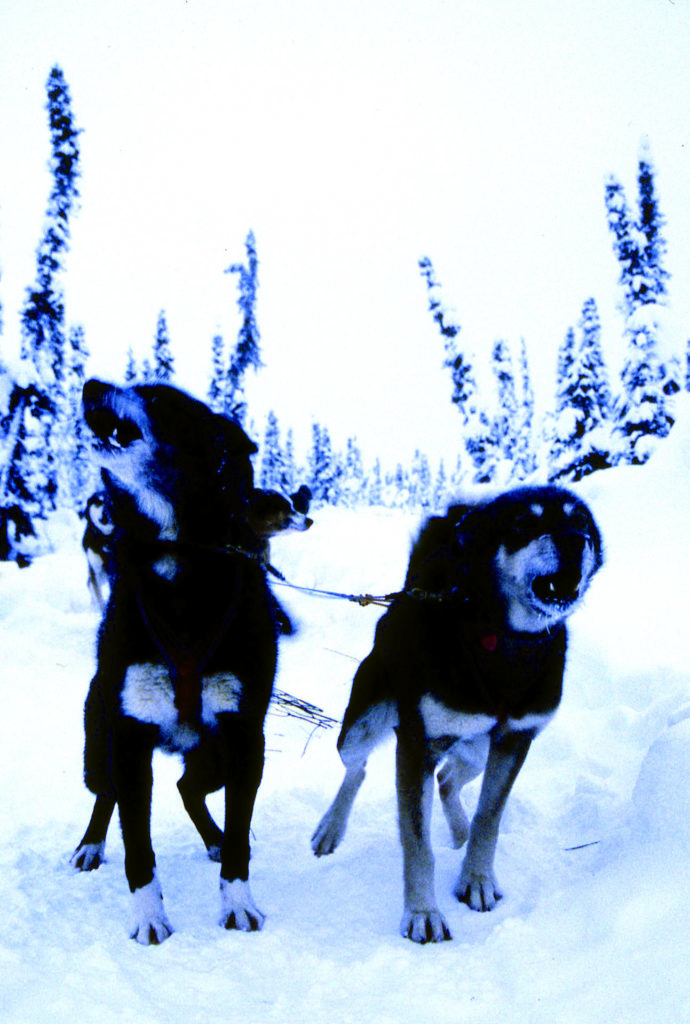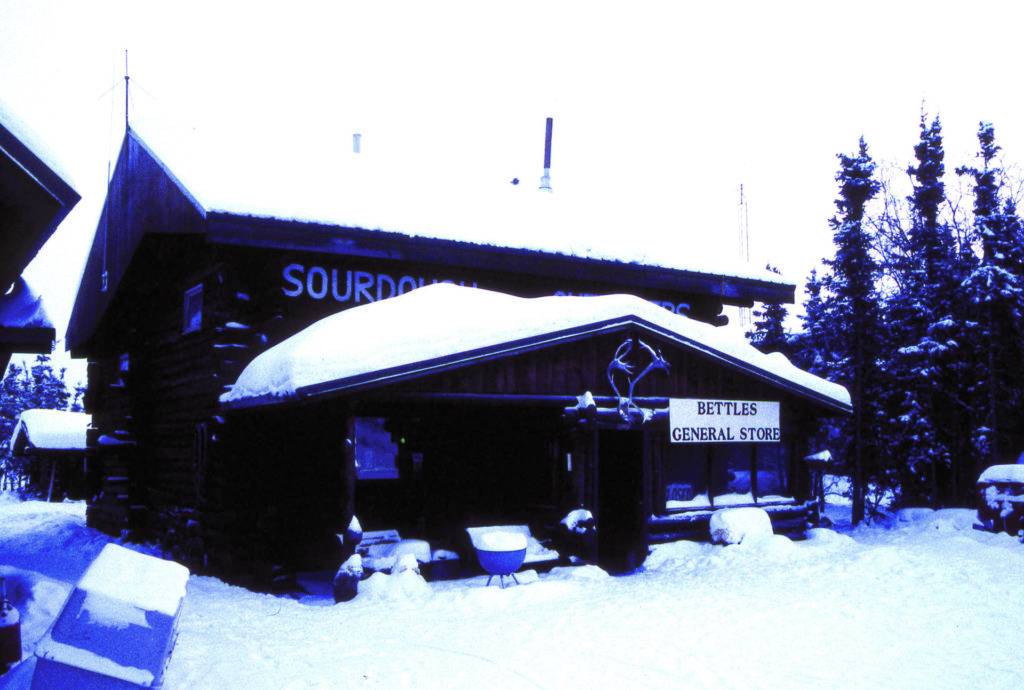The harsh Alaskan winter blanketed in snow, ice and darkness. A sun that never rises and a people whose hearts remain warm. That is all that exists in a world resting 50 degrees below.

This story is from one of my first trips to Alaska and is now one from the distant past. I had first traveled in summer when resplendent green covered Alaska’s great expanse, and I wondered to myself how these people lived during a winter where the sun never rises. During the winter, I returned to answer that question for myself. After these first trips to Alaska, I continued to travel there every year for the next 10 years. However, at the time of this story, I couldn’t have imagined how enchanted I would become with this place.
How terrible. The bags I checked on the flight are not coming out on the belt. We’re standing at the baggage claim at Fairbanks International Airport and will catch a connecting flight toward the Arctic Circle, but the bag with my extreme winter sleeping bag and other cold-weather gear hasn’t come out of the slot. Ed, who I haven’t seen in six months, is clowning around and looking at me, asking, “How do you expect to sleep without your bag? Are you planning on digging a hole and catching some shuteye?”
I was informed by a baggage handler that the last of the bags from the plane have already been off-loaded, and he has no clue as to the whereabouts of my stuff. We go to Ed’s place and wait for a phone call. Ed jokes, “You want to take my sleeping bag?,” but the thought of how cold it would be in a bag designed for a two-meter tall man doesn’t sound too appealing.

To the harsh winter of the Arctic Circle
The sound of the propellers has stopped and the hatch on this small fixed-wing aircraft pops open. The extreme cold air rushes into the plane and seems to evaporate any trace of moisture. Bending over at the waist, I make my way to the plane’s hatch and climb down the stairs.
As I deplane, a guy approaches asking me, “So are you the Japanese guys who want to go dog-sledding?” The young man’s name is Brandon Benson and, despite his youth, his looks are tempered by a slightly balding head and sheer blue eyes which have seen the full breadth of Alaska’s beautiful scenery. He also has a charming way with words.
His father started Sourdough Outfitters here in Bettles in 1972 as an outdoor tour business, and he continues to manage operations. Their tours have been consistently praised and, in 2000, their dog-sled tour appeared in National Geographic Adventure’s “Best 100 Adventures,” hanging its hat at No. 3 on the list.
After exchanging the usual pleasantries, Brandon shows me the bunkhouse where we’ll be spending the better part of a week. We stow our gear, check where the firewood, shower and toilet are, and finally make our way to the living room in the main building. There we meet Brandon’s wife Kelley and their two dogs, Doonerak and Maya. Doonerak, named after a famous peak along the Alaskan Koyokuk River, moves about looking clever, while Maya constantly chases her tale, stressed from the lack of sunlight.

“Aren’t you cold?” asks our guide, Bill Makey. I reply that I’m fine and that it’s not too cold. However, Bill retorts with, “Well, I’m starting to get chilled.” Not wanting to be the only one complaining of the cold, I tried toughing it out, but finally admit it is “getting a little chilly.”
We board a sled with a six-dog team and head for the severe winter of the Brooks Range. The mercury floats between 20 and 30 degrees below zero, and the sound of skis skimming the ground is the only noise to break the peaceful silence. The scenery never changes from white snow, grey sky and groves of black spruce. The dogs take up snow in their mouths to relieve their dried-out throats.
“We mushers are always being saved by our dogs.” I listen intently as Bill goes on to talk of mushers being saved by their dog teams after falling in the snow. Although snowmobiles have become the main form of winter transportation, in recent years the use of dogsleds is being looked at in a different light. If your snowmobile breaks down in the middle of nowhere, it could mean death.
“Let’s set up camp here.” Bill points ahead to a small, frozen-over lake and says we’ll pitch our tent there. The tent is double-layered with an inner lining of something similar to wool. There’s a stove inside which burns pellets, making the difference in temperature inside and outside more than 50 degrees. It’s warm enough to sleep in just my skivvies, but the pellets may burn out during the night, and I don’t want to chance the cold attacking my body.
“Tomorrow, let’s remain here,” Bill suggests. The cold has now changed to a blistering 40 degrees below, and if this trend in weather continues, tomorrow could be even colder. I look outside the tent to see an aurora appearing from the northwest. Red and green pillars of light seem to move about across the winter sky like keys on a piano. I glance at the thermometer and find the mercury settling at just under 50 degrees below. Bill’s proposition that we take it easy here for another day seems to be a good one.
Inside the tent, the pellet stove is burning away at a good pace and, as I nestle back into my sleeping bag, I hear our dogs answer in unison to the howling of a wolf somewhere in the distance. This exchange seems to go on forever and is the only sound to break the silence of the vast darkness.

To me, Alaska is not just a great wilderness to be visited. The people here are like no other, and they remain here as a second family for me that I visit often. Most who live here are forced to rely on each other and from that comes their kindness and a warmth which is the exact opposite of the bitter cold that is Alaska. To continue my journey with them is the reason I go.
Writer’s note: After many years at the helm, Bill Makey has left Sourdough Outfitters. The company is currently under different management. Web site: www.sourdoughoutfitters.com




